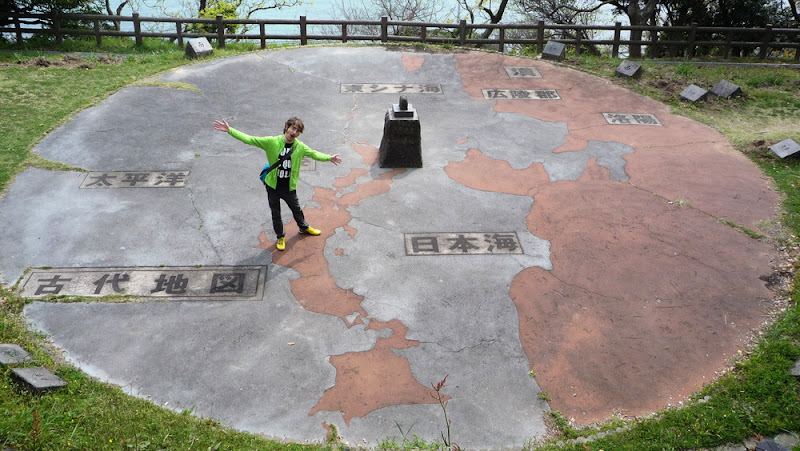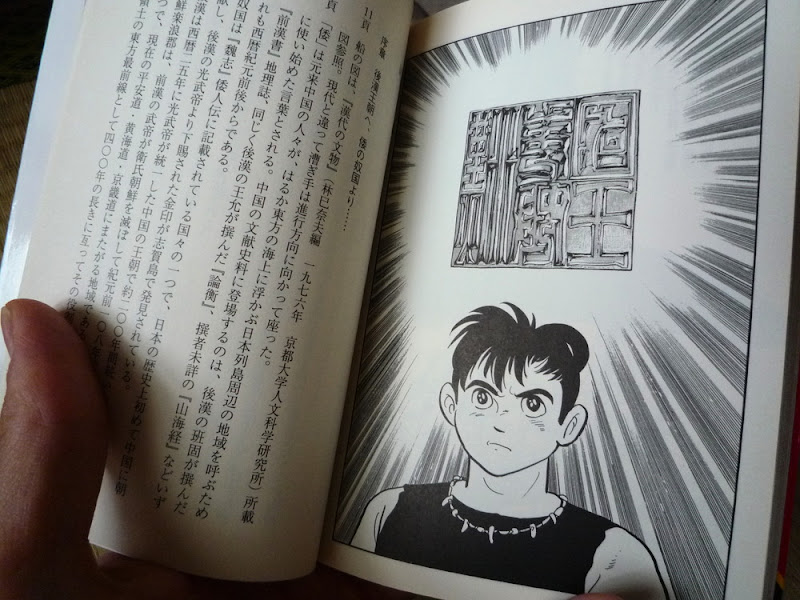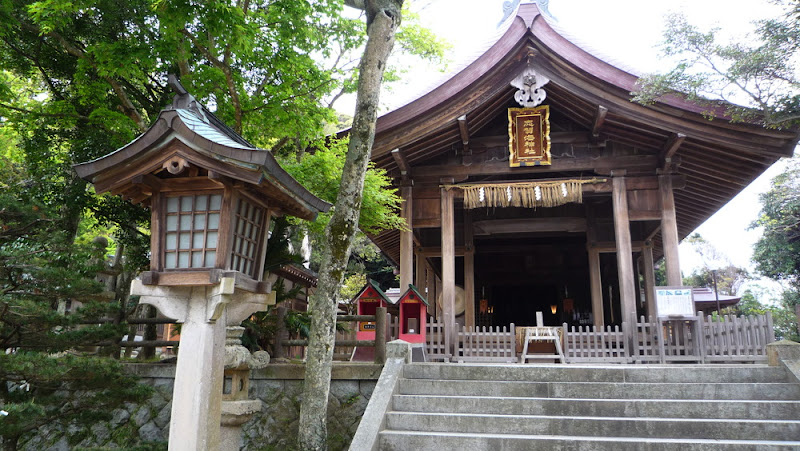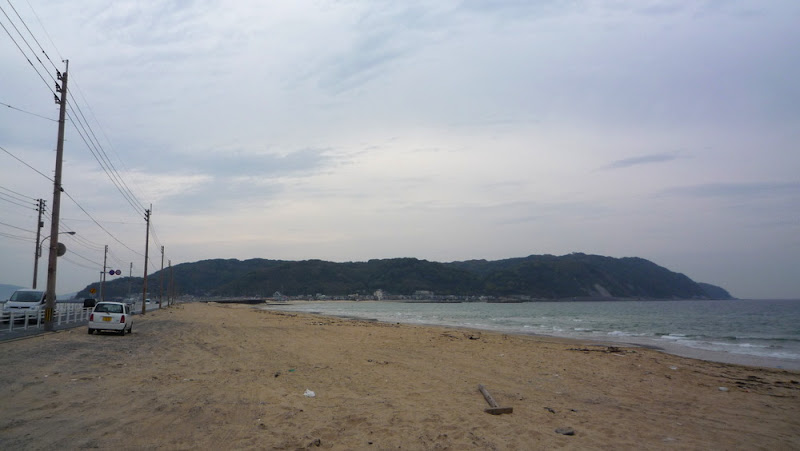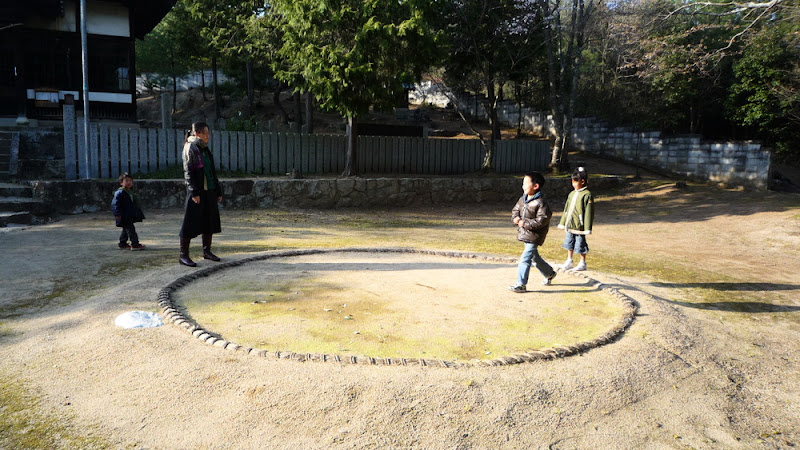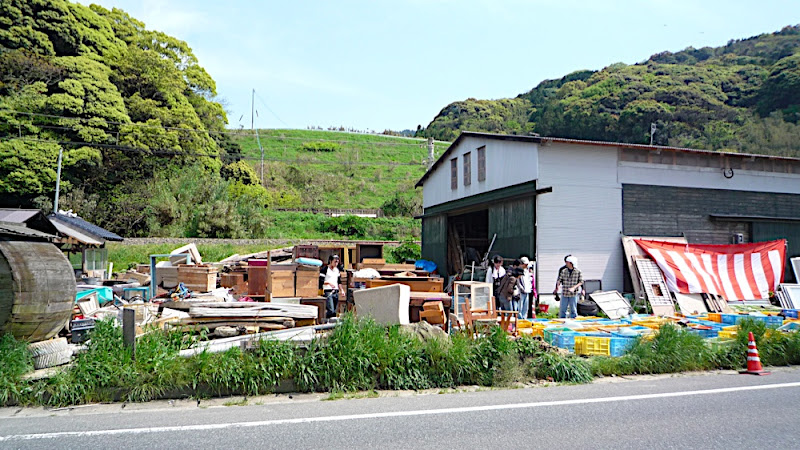
El fin de semana pasado fuimos a Itoshima a ver el mercadillo de la chatarra que organizaba la constructora Fujiwara Kensetsu. Como veis, es un montón de chatarra en una nave industrial al lado de la carretera. ¡Y nos gustó!
先週末は糸島に藤原建設主催のがらくた市を見に行った。ご覧の通り、道路の横にがらくたが並んでいるだけです。そこが楽しかった!
Last weekend we went to Itoshima for the junk market held by Fujiwara Kensetsu. As you can see, it’s a lot of junk beside the road. And it was fun!

Es un lugar en el que te puedes encontrar cualquier cosa.
何が出てきてもおかしくない場所。
A place where you might find anything.
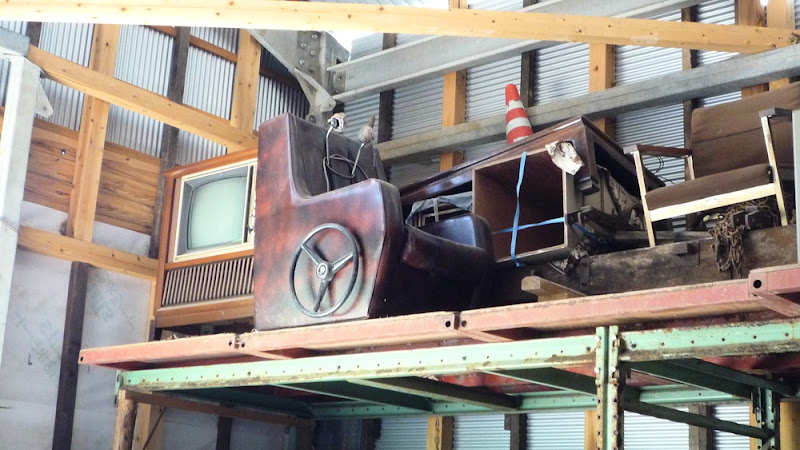
En la nave tenían muebles y cacharros antiguos rarísimos.
建物の中には昔の珍しい家具や家電が置いてあった。
They had rare antique furniture and stuff inside the building.

Karaoke en cinta. Por si os creíais que los de LaserDisc eran antiguos.
レーザーディスクより古いカラオケ発見:テープ式カラオケ。
I thought LaserDisc karaoke was the oldest one. I was wrong: these are karaoke tapes!
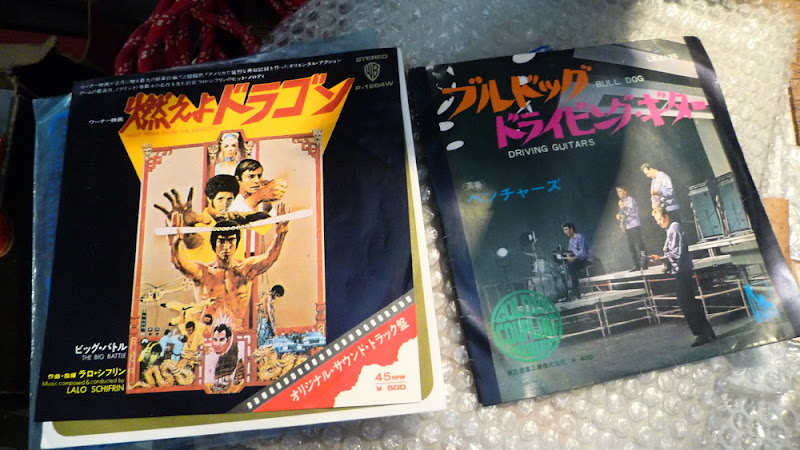
Un single de la banda sonora de Enter the Dragon, película de Bruce Lee. Y a la derecha uno de The Ventures, muy famosos en Japón en los 60.
ブルース・リーの映画「燃えよドラゴン」のサントラと、60年代日本で人気があったベンチャーズのシングル。
A single from the Enter the Dragon original soundtrack (the Bruce Lee movie), and another one by The Ventures.

Partituras de la 9ª Sinfonía de Beethoven con leyenda en katakana para saber cómo se pronuncia la letra de los coros.
ベートヴェンの交響曲第九番の楽譜。コーラスの歌詞にはカタカナが付いている。
Scores for Beethoven’s 9th Symphony. They have katakana reading for the chorus.

Por supuesto, también había cosas rotas. ¿Os da miedo?
もちろん、壊れている物もあった。怖い?
Of course there was broken stuff too. Is this scary?

Fuera había muchos platos y vasos, y algunas cosas que no tenían nada que ver como esta máquina tragaperras.
外には食器がいっぱいあって、このスロットマシーンみたいに全く関係ないものもあちこちに置いてあった。
There were lots of dishes and glasses outside. And some completely unrelated things too, like this slot machine.
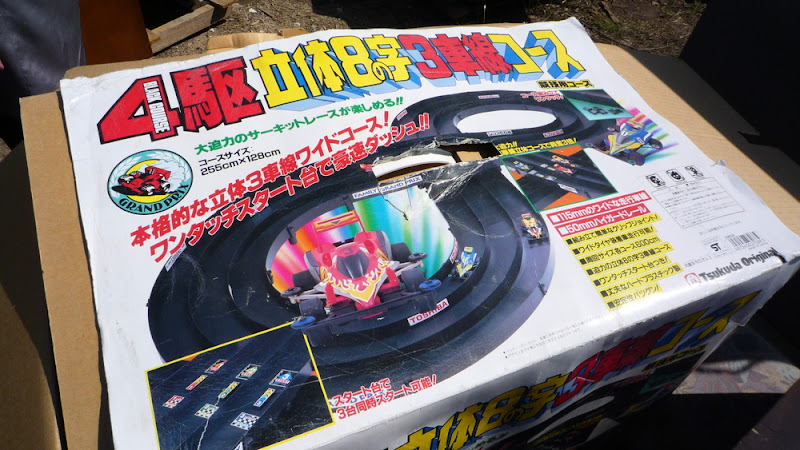
O este circuito de Mini 4WD (algo parecido a un Scalextric) de tres carriles, que además no es de la marca Tamiya, el fabricante más famoso de estos juguetes.
このミニ四駆サーキットは3車線だけじゃなくてタミヤじゃないのも珍しいかもしれない。
Or this Mini 4WD circuit. Not only it has three lanes, but also it’s not a Tamiya. Tamiya was the most popular maker of these.
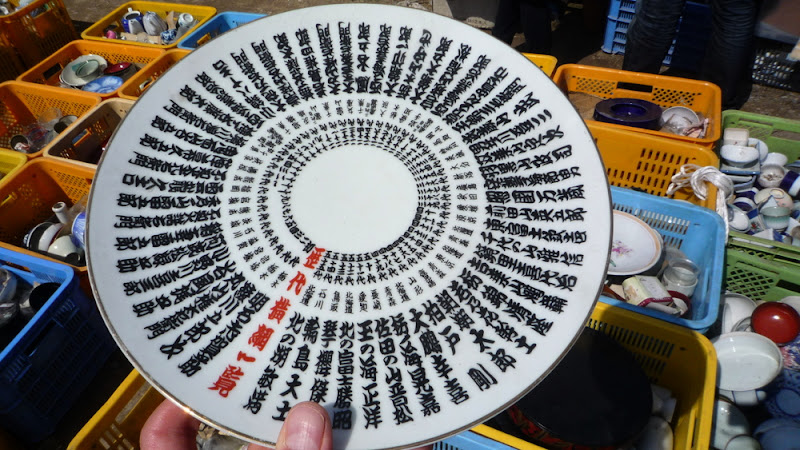
Y para acabar un plato con una lista de todos los yokozuna que ha habido en el sumo hasta algún momento entre 1974 y 1978 (cuando hicieron este plato). ¿Vendríais a ver un mercadillo así?
最後に、1974〜1978年までの横綱の名前が載っているお皿。皆さん、こういうところに行ってみたいと思いますか?
And to finish, a dish with the names of all of sumo’s yokozunas –only until some time between 1974 and 1978 (when it was probably made). Would you like to go to a market like this?


